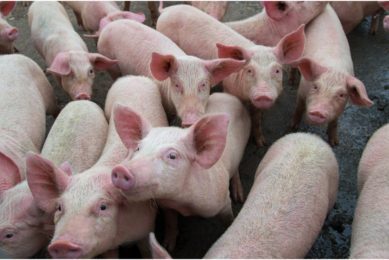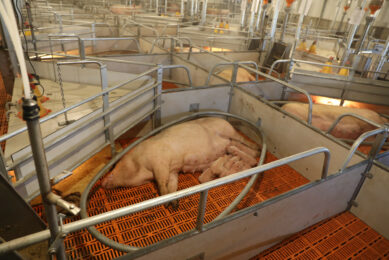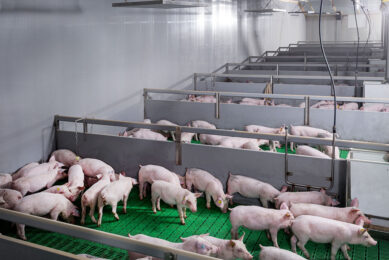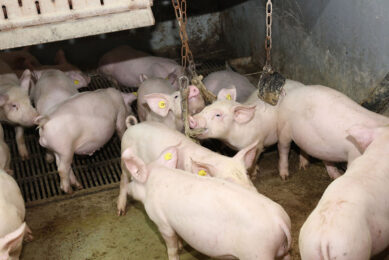What the textbooks don’t tell you about… Heat stress
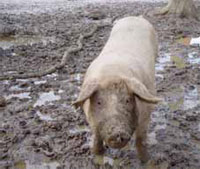
By John Gadd
We in the Northern Hemisphere are now in the hot weather season. The textbooks deal with the subject of hot conditions in the piggery comprehensively but tend to overload an intensely practical subject with scientific language. These notes are based on many years of visiting pig units in very hot dry countries such as Australia and Mexico as well as hot wet countries such as Thailand and Vietnam.
These producers have a rather easier job in keeping their pigs within their productive comfort zone because it is hot/ dry or hot/ wet virtually all the time and there is relatively little range in temperature.
Another group of producers find things rather more difficult, as while they too have hot/ dry (Spain) or hot/ wet summer conditions (Kyushu, Japan) they also have coldish winters, so the diurnal (day/ night) temperature range they have to allow for is much wider.Then there is the growing group of us here in Northern Europe, in the so-called ‘temperate’ zones where we too can have wettish, cool summers interspersed, due to global warming, with increasingly hot and dry summers, so our diurnal differences are also widening.In travelling to all these places over the past three decades, I have looked and learned from the variety of hard-won experiences of all these producers. So… a few observations.
UCT or ECT?
Upper Critical Temperature (UCT) is the temperature above which the pig has to divert its physiology, especially energy, from productive performance and combating disease into seeking ways of keeping itself cool. In addition, anxiety stress kicks in to affect performance. The textbooks make much of UCT and rightly so, as to go past UCT is dangerous, and too far past, life-threatening. Trouble is UCT is not all that apparent as it can vary substantially according to the age, weight and fat cover of the pig, the structures surrounding it, relative humidity etc. These all combine to alter this critical threshold temperature.
ECT more practical
I find Evaporative Critical Temperature (ECT) to be a far more useful measurement because you can see it. The pig starts to pant when this is reached, which is normally 3 to 5˚C below UCT, so it acts as a warning call-to-action by the stockperson. ECT occurs when panting increases the evaporative heat loss from the lungs – all the pig can really do to start to cool itself (the pig being almost completely lacking in sweat glands) before it tries to move away from its companions/ look for somewhere cooler.
Many times I have walked through a piggery with the attendants and seen pigs panting. “Get a hose and spray those pigs now,” I say.
“What – now?”
“Yes at once – panting is a sign that the animals are very close to, or exceeding UCT, which means that performance is already affected, heat-stress could be letting disease take hold, and if it goes on too long and the temperature climbs even more then worse could occur – abortion or even death. So get them cooler now!”
I’ve always said that pigs talk to you in a variety of ways – if you know how to listen – and here they are positively shouting at you!
Wetting and air movement
We all know that vigorous evaporation cools (lick the back of your hand and wave it about) and are well-versed in wetting pigs to cool them by hosepipe in an emergency.
And in hot weather by misting or spray droplets (much more effective) on a timed basis.*
Overlooked
What is often overlooked is that air movement over the pigs is as important as the wetting itself. Again, lick the back of your hand and this time wave it slowly through the air and then vigorously – you will notice the increased cooling effect of a greater passage of air across wetted surface.
Now this effect is very dangerous to the pigs well-being if the wetting and blowing continues too long into the period when the temperature falls, such as in the late afternoon in spring and further on into the evening in autumn. This is particularly harmful to baby piglets and weaners, and a close watch on when the temperature gradient suddenly falls is needed (it can happen across ten minutes or less) so as to ensure the timer is set to cease the wetting in time to prevent chilling.
Huddling in early evening will alert you to having got it wrong. Normally it takes at least 30 minutes for a wetted pig to satisfactorily dry off and not feel the chilling effects of a cooler environment, so you need to allow for this.
Pigs talking to you again!
Next month: I will describe some more hints on dealing with heat stress and try to make a bit clearer the insufficiently understood problem of ‘seasonal infertility’ – badly-named and not yet fully understood by experts and farmers alike.
*This is fully described with required specifications and diagrams as to layouts in my textbook What the Textbooks Don’t Tell You (Nottingham University Press, 2005).



